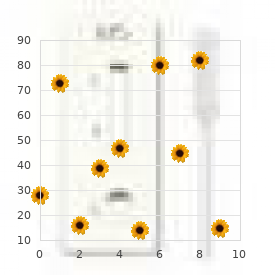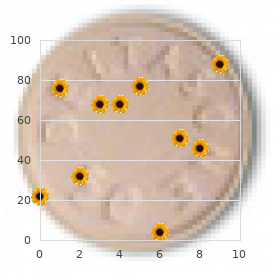"Safe 250 mg terbinafine, jessica antifungal treatment review".
By: J. Hengley, M.B. B.CH. B.A.O., Ph.D.
Assistant Professor, Cleveland Clinic Lerner College of Medicine
Multiple sections have had significant updates and there are many new articles including: Cardiology Mechanical Support & Transplant antifungal meaning terbinafine 250 mg cheap, Peripheral Artery Disease fungus vulva buy 250mg terbinafine visa, Cardio-Oncology; Infectious Disease Head & Neck Infections, Sexually Transmitted Infections, Travel Medicine; Geriatrics & Palliative Care Non Pain Symptom Management, Advanced Care Planning; Endocrinology Osteoporosis; Allergy & Immunology Common Allergic Disorders; Psychiatry Agitation, Psychosis; Primary Care Decision Aids. We hope we have lived up to their example: 1994 Albert Shaw & Ravi Thadhani 2008 Maha Farhat & W. Steve Sigler 1995 Barry Kitch 2009 David Dudzinski & Elizabeth Guancial 1996 Sam Hahn 2010 Roby Bhattacharya & Paul Cremer 1998 Marc Sabatine 2011 Kerry Massman & Vilas Patwardhan 2000 Sherri-Ann Burnett & Bill Lester 2012 Michelle Long & Mihir Parikh 2001 Jose Florez 2013 Molly Paras & David Sallman 2003 Andrew Yee 2014 Zaven Sargsyan & George Anesi 2004 Ishir Bhan 2015 Ang Li & Jehan Alladina 2005 Aaron Baggish & Yi-Bin Chen 2016 Nino Mihatov & Tessa Steel 2006 Bobby Yeh & Eugene Rhee 2017 Michael Abers & C. Charles Jain 2007 Rajeev Malhotra 2018 Kelsey Lau-Min & Jonathan Salik And of course, none of this would be possible without the guidance and support of so many amazing people that make up the Department of Medicine. In particular, we extend special thanks to Gabby Mills, Libby Cunningham, and Paula Prout for supporting this project. In addition, we would like to thank our Chief Residents Emily Walsh, Daniel Restrepo, Nino Mihatov, and Nancy Haff for their undying support and sage wisdom. Finally, we are very grateful to Jay Vyas, Hasan Bazari, and Katrina Armstrong for their endless devotion to housestaff education. We look forward to the contributions of future generations of authors and editors in the years to come. Every clinical care decision must be made by the exercise of professional judgment by the individual responsible for the care of a patient based on the facts of that individual case, which may differ from the facts upon which entries in this manual are based. You should consult other references and your fellow residents, fellows, and attendings whenever possible. Pulse and blood pressure measurable or spontaneous arterial pressure waves on A-line tracing Ventilation and Oxygenation: maintain SpO2 > 94%. This device allows for external defibrillation, cardioversion, and pacing with additional benefits. If the patient has excessive chest hair, shave it to ensure proper adhesion of the electrodes Attach hands-free therapy electrodes in anterior-anterior/apicalsternum skin pad placement (pictured) Pacing Indications: Unstable bradycardia 1. See "Ischemia/Infarction" on next page T-wave: Ventricular repolarization, with a slow upstroke and a rapid return to the isoelectric line after peaking. Call for early back-up / Senior On for medication administration, cardioversion, and uptriage. Digoxin alone is moderately effective in controlling V-rate at rest, ineffective during exertion or high adrenergic tone. Men 2x > women, age 60s-80s, cocaine use, high-intensity exertion (weight lifting). Friction rub (breath hold to distinguish from pleural rub); tamponade: pulsus >10. Tachycardia, tachypnea, hypoxemia Ipsilateral absence of breath sounds/deviation of trachea (if tension, contralateral deviation) Bronchial breath sounds, rales, dullness Sudden onset, dyspnea/hypoxemia, pleuritic, hx of cancer/recent surgery/immobility, +/- TnT. Sudden onset, 20-40 yo (spontaneous and more likely if tall), family or personal history, smoker, known emphysema, men > women, recent chest procedures/lines. Usually initiated in cath lab as upstream tx provides no mortality benefit and bleeding risk. If a patient is at very high-risk for bleeding, consider clopidogrel half load (300 mg) or maintenance dose (75 mg), in lieu of the full 600mg loading dose. Associated with mortality, particularly if late (>30d) afib (Circ 2011;123:2094) Correct electrolyte deficits. Consult allergy service for expedited protocol if the cath is required emergently. Respiratory distress: Patient will need to lie flat; consider intubation if prohibitive hypoxemia/pulmonary edema Percutaneous Coronary Intervention Considerations Access: Fewer bleeding/vascular complications if radial (vs. Treat with compression if <2 cm, may require thrombin injection or surgery if >2 cm. Decision re: angiography/revascularization varies by patient (degree of sx, known stenosis, current meds). Caution with seizure hx as reversal agent used with Regadenoson (aminophylline) has increased risk of seizure.


The major factor influencing the pattern and distribution of fetal blood flow is the relative vascular resistances of the pulmonary and systemic circuits fungus yard effective terbinafine 250mg. In contrast to the adult circulation antifungal cream for lips order terbinafine with a visa, the pulmonary vascular resistance in the fetus is very elevated, and the systemic vascular resistance is low. Prenatally, the lungs are airless, and the pulmonary arterioles possess thick media and a narrowed 8 Unique cardiac conditions in newborn infants 247 lumen. These anatomic features of the pulmonary arterioles are accentuated by the relative hypoxic environment of the fetus, as hypoxia is a potent stimulus for pulmonary vasoconstriction. The systemic vascular resistance is unusually low, primarily because of the large flow through the placenta, which has low resistance. In the fetus, the pulmonary vascular resistance is perhaps five times greater than the systemic vascular resistance, the reverse of the adult circulation. Because the systolic pressures in both ventricles and great vessels are identical, the distribution of blood flow depends upon the relative vascular resistances. As a result, a relatively small volume of blood flows through the lungs and a large volume passes through the ductus from right to left into the descending aorta. A considerable proportion (about 40%) of the combined ventricular output flows through the placenta. The right-to-left shunt at the atrial level in the fetus depends in part upon the streaming effect caused by the position of the valve of the foramen ovale. This ridge tends to divert blood from the inferior vena cava into the left atrium through the defect. Since the atrial pressures are identical, the shunt also depends on the relative compliances of the ventricles. Approximately one-third of the total flow returning to the right atrium crosses the foramen ovale. Transition to postnatal circulatory physiology At birth, the distinctive features of fetal circulation and the vascular resistances are suddenly changed. A major reversal of resistance occurs because of the separation of the placenta and the onset of respiration. The loss of the placenta, which has acted essentially as an arteriovenous fistula, is associated with a doubling of systemic vascular resistance. The expansion of the lungs is associated with a sevenfold drop in pulmonary vascular resistance, principally from vasodilation of pulmonary arterioles secondary to an increase in inspired oxygen level to normal. Coinciding with the fall in pulmonary vascular resistance, the volume of pulmonary blood flow increases and thus the volume of blood returning to the left atrium increases proportionately. The left atrial pressure rises, exceeds the right atrial pressure, and closes the foramen ovale functionally. In most infants for up to several months, a small left-to-right shunt occurs via the incompetent flap of the foramen ovale. Anatomically, the atrial septum ultimately seals in 75% of children and remains "probe-patent" in 25%. The ductus narrows by muscular contraction within 24 hours of birth, although anatomic closure may take several days. The closure of the ductus is associated with a lowering of pulmonary arterial pressure to normal levels. When the ductus and foramen ovale close, the pulmonary blood flow equals systemic blood flow, and the circulations are in series. In the neonatal period, the changes that occur in the ductus, foramen ovale, and pulmonary arterioles are reversible. The pulmonary arterioles and the ductus 248 Pediatric cardiology arteriosus are responsive to oxygen levels and acidosis. An increase in the vascular resistance occurs in conditions associated with hypoxia. Although minor changes occur at a PaO2 of 50 mmHg, large increases in pulmonary vascular resistance occur at PaO2 levels less than 25 mmHg. If acidosis coexists with hypoxia, the increase in pulmonary resistance is far greater than at comparable levels of PaO2 occurring at normal pH.

Axial antifungal intravenous purchase terbinafine australia, coronal anti fungal nail purchase terbinafine in united states online, and sagittal cuts are each useful for diagnosing specific fractures. An orbital floor fracture is difficult to appreciate on axial cuts but will be obvious when viewed in the coronal and sagittal Chapter 5 Radiographic Examination 61 planes. Therefore the thickness of the slices affects the quality of the product in these planes (thick slices produce a stepped appearance). A slice thickness of 2 to 4 mm can be adequate for the diagnosis of facial fractures. However, if reformatting is needed for alternative planes or for three-dimensional reconstruction, a slice thickness of 1 to 1. Those who take facial trauma calls not only provide primary consultation for definitive management of injuries on initial presentation, but also secondary consultation with patient transfer. The latter is particularly relevant in level 1 trauma centers and requires certain special considerations. The complete maxilla and mandible are not visualized, although the superior portion of the condyles may be seen. The specific study required will be influenced by the clinical examination and by the imaging protocols of the institution. One must be familiar with the imaging protocols and the specific regions included. The films should be assessed not only for the injuries that are seen, but also for the areas that are not included in 62 Part One Basic Principles the studies. If the quality is insufficient, or if the studies are incomplete, and there is concern of an injury in an area not visualized, then appropriate repeat studies should be obtained. Indicators that a frontal sinus fracture is present are an air-fluid level in the sinus and pneumocephalus. Evaluation of the frontal sinus begins by looking at the anterior and posterior walls. If a fracture is present, the degree of comminution and displacement of the walls should be noted. In most patients there is usually an intersinus septation that divides the frontal sinus into a right and left half. However, in approximately 20% of patients the frontal sinus is rudimentary or entirely absent. The frontal sinus drains inferiorly via paired hourglass shaped structures, the nasofrontal recesses, which travel through the anterior ethmoidal labyrinth and ultimately drain into the middle meatus. The frontal sinus infundibulum forms the cephalad portion of the hourglass and narrows to form the true frontal sinus ostium. The nasofrontal recess splays out caudal to the Chapter 5 Radiographic Examination 63 frontal sinus ostium and enters the ethmoid infundibulum. The nasofrontal recess is extremely short in 85% of individuals and represents a recess rather than a true ductal structure. Indicators of nasofrontal recess injury are involvement of the base of the frontal sinus or anterior ethmoid complex. Evaluation of the nasofrontal recess is best done with coronal cuts, because the frontal sinus floor and ethmoid complex are better visualized, as seen in Fig. The caudal portion is composed of the frontal sinus infundibulum; the cephalad portion is composed of the ethmoid infundibulum. Axial views typically show splaying of the medial vertical maxillary buttress (arrow), which appears as an inverted Y. The vertical segment of the inverted Y represents the nasomaxillary buttress, and the anterior and posterior lacrimal crests form the two limbs of the inverted Y. In such cases, the patient may develop a lacrimal outflow obstruction fracture and therefore should be informed of this preoperatively. Therefore, as with frontal sinus injuries, drainage of the frontal sinus can be obstructed. The frontal sinus drains inferiorly through paired hourglass-shaped structures, the nasofrontal recesses, which ultimately drain into the middle meatus.
250 mg terbinafine with visa. CURE !! PARASITES CANDIDA ANTIFUNGAL.



